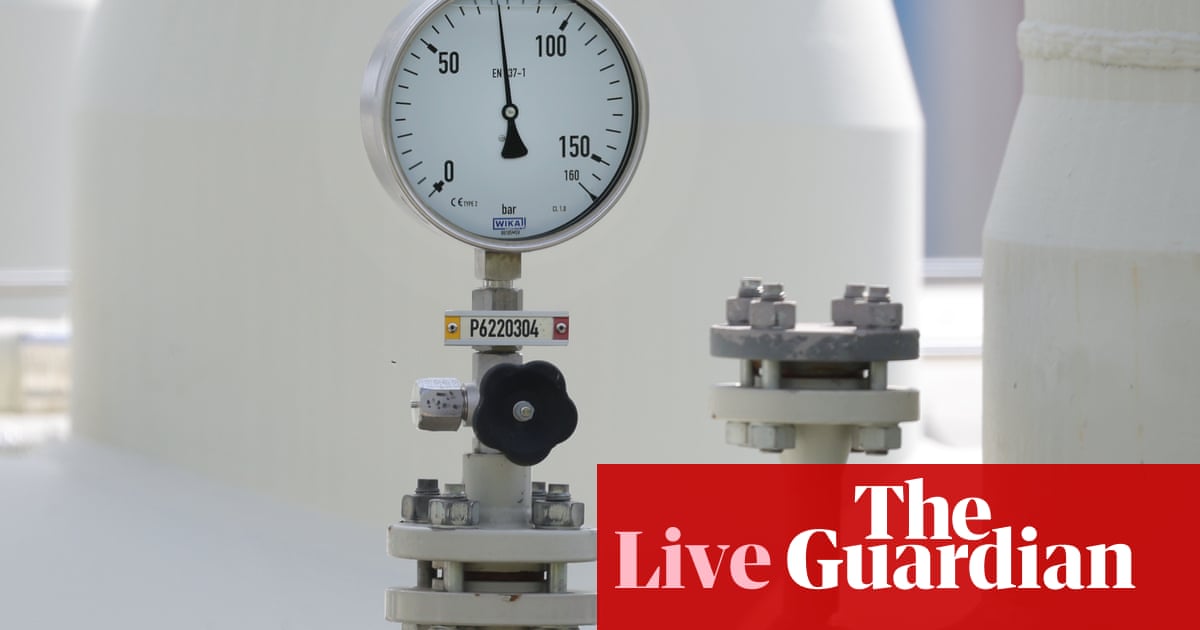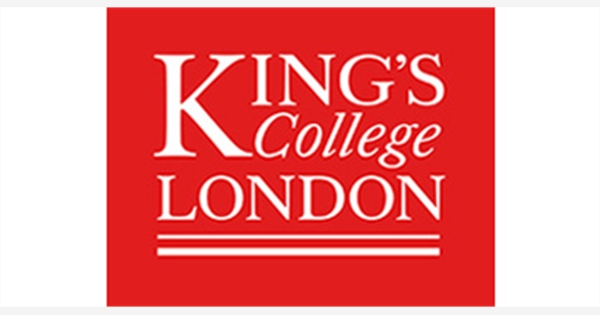We use some essential cookies to make this website work.
We’d like to set additional cookies to understand how you use GOV.UK, remember your settings and improve government services.
We also use cookies set by other sites to help us deliver content from their services.
You can change your cookie settings at any time.
Departments, agencies and public bodies
News stories, speeches, letters and notices
Detailed guidance, regulations and rules
Reports, analysis and official statistics
Consultations and strategy
Data, Freedom of Information releases and corporate reports
Published 7 February 2022

© Crown copyright 2022
This publication is licensed under the terms of the Open Government Licence v3.0 except where otherwise stated. To view this licence, visit nationalarchives.gov.uk/doc/open-government-licence/version/3 or write to the Information Policy Team, The National Archives, Kew, London TW9 4DU, or email: psi@nationalarchives.gov.uk.
Where we have identified any third party copyright information you will need to obtain permission from the copyright holders concerned.
This publication is available at https://www.gov.uk/government/publications/public-health-grants-to-local-authorities-2022-to-2023/public-health-ringfenced-grant-2022-to-2023-local-authority-circular
This circular sets out:
allocations of the local government public health grant for 2022 to 2023
the conditions that will apply to that grant
guidance intended to assist local authorities
In 2022 to 2023, the total public health grant to local authorities will be £3.417 billion.
The grant will be ringfenced for use on public health functions. This may include public health challenges arising directly or indirectly from COVID-19.
The Secretary of State has determined, pursuant to section 31 of the Local Government Act 2003, to pay grants to relevant authorities in the amounts indicated for the financial year 2022 to 2023.
This circular is accompanied by 4 annexes:
Annex A – Public health ringfenced grant determination and conditions 2022 to 2023
Annex B – Public health grant allocations for 2022 to 2023
Annex C – Public health reporting categories for 2022 to 2023
Annex D – Assurance letter
The 2022 to 2023 grant will be paid in quarterly instalments:
Quarter 1 – Friday 8 April 2022
Quarter 2 – Friday 8 July 2022
Quarter 3 – Friday 7 October 2022
Quarter 4 – Friday 6 January 2023
Pursuant to section 31(4) of the Local Government Act 2003 the Secretary of State has attached conditions to the payment of the grant, which are set out under ‘Grant conditions’, ‘Reporting’ and ‘Financial management’ in Annex A (below) and are unchanged from 2021 to 2022. When assessing whether local authorities have complied with these conditions, the Department of Health and Social Care (DHSC) will continue to look at the primary purpose of local authorities’ spending.
The department’s presumption is that the grant will be spent in-year. If at the end of the financial year there is any underspend, local authorities may carry these over, as part of a public health reserve, into the next financial year. In using those funds the next year, local authorities will still need to comply with the grant conditions. The department may consider reducing future grant amounts to local authorities that report significant and repeated underspends.
Local authorities will need to forecast and report against the sub-categories in the Revenue Account (RA) and Revenue Outturn (RO) returns to the Department for Levelling Up, Housing and Communities (DLUHC) which will share data with DHSC. The main and primary purpose of all spend from the grant is public health.
Given that the RO return is used as a way of monitoring the usage of the grant, it is important that both the finance contacts and public health teams responsible for this section of financing are content with the figures submitted. Local authorities will need to ensure that the figures are verified and in line with the purpose set out in the grant conditions. A list of the reporting categories is at Annex C. Local authorities’ chief executives (or Section 151 officers) and directors of public health will also need to return a statement confirming that the grant has been spent in accordance with the conditions. The required statement is at Annex D.
At the end of the financial year, local authorities will need to submit a more detailed RO return to DLUHC. Local authorities must record expenditure against each of the prescribed functions categories which are classified in Annex C, to demonstrate that they are undertaking activity in these areas.
The full value of the grant must be accounted for in the RO returns. As such, the closing value of a local authority’s public health reserve minus the opening value of the public health reserve when added to the net spend reported in the year must be greater than or equal to the value of the grant for the year.
Where income relating to public health activities is received from other sources than the ringfenced grant, and such income is recorded on the RO return as public health, then the corresponding expenditure should also be recorded as public health, and any income not spent at the year-end should be carried forward in the public health reserve.
Guidance on reporting and categorisation of spend is available to local authorities in the Service Reporting Code of Practice (SeRCOP) on how activity should be recorded against the sub-categories.
Enquires about this circular should be addressed to DHSC at phgfinance@dhsc.gov.uk.
The Secretary of State for Health and Social Care (‘the Secretary of State’), in exercise of the powers conferred by section 31 of the Local Government Act 2003, makes the following determination:
This determination may be cited as the ‘Public health ringfenced grant determination 2022 to 2023: No 31/5900’.
This grant can be used for both revenue and capital purposes.
The purpose of the grant is to provide local authorities in England with the funding required to discharge the public health functions detailed in paragraphs 2 to 4 below under ‘Grant conditions’.
Pursuant to section 31(4) of the Local Government Act 2003, the Secretary of State determines that the grant will be paid subject to the conditions set out under ‘Grant conditions’, ‘Reporting’ and ‘Financial management’ below.
The ringfence on the grant will remain in 2022 to 2023.
The Secretary of State determines as the authorities to which the grant is to be paid and the amount of grant to be paid in the financial year 2022 to 2023, the authorities and the amounts for the financial year 2022 to 2023 are set out in the exposition book.
Before making this determination the Secretary of State obtained the consent of the Treasury.
Signed by authority of the Secretary of State for Health and Social Care
Simon Reeve
Deputy Director – Public Health Systems and Workforce
Department of Health and Social Care
1. In this determination:
– ‘an authority’ means an upper-tier or unitary local authority identified in the Appendix
– ‘the department’ means the Department of Health and Social Care
– ‘financial year’ means a period of 12 months ending 31 March 2023
– ‘NHS body’ means an NHS body within the meaning of section 75 of the National Health Service Act 2006
– ‘grant’ means the amounts set out in the ‘Ringfenced public health grant determination 2022 to 2023’
– ‘Upper tier and unitary local authorities’ means:
2. Pursuant to Section 31 of the Local Government Act 2003, the Secretary of State hereby determines that the public health grant shall be paid towards expenditure incurred, or to be incurred, by upper-tier and unitary local authorities in the financial year 2022 to 2023. The relevant authorities are shown in the exposition book.
3. Subject to paragraph 5, the grant must be used only for meeting eligible expenditure incurred or to be incurred by local authorities for the purposes of their public health functions as specified in Section 73B(2) of the National Health Service Act 2006 (‘the 2006 Act’).
4. The functions mentioned in that subsection are:
(a) functions under section 2B, 111 or 249 of, or Schedule 1 to, the 2006 Act
(b) functions by virtue of section 6C of the 2006 Act
(c) the Secretary of State’s public health functions exercised by local authorities in pursuance of arrangements under section 7A of the 2006 Act
(d) the functions of a local authority under section 325 of the Criminal Justice Act 2003 (co-operating with the police, the probation service and the prison service to assess the risks posed by violent or sexual offenders)
(e) such other functions relating to public health as may be prescribed
5. A local authority may use the grant to contribute to a fund made up of:
(a) contributions by the authority from both the public health grant and other sources of funding – for example, from other local authority funding, or from payments made by a private sector or civil society organisation; or
(b) contributions by the authority and one or more of any of the following bodies:
(i) another local authority
(ii) an NHS or other public body
(iii) a private sector or civil society organisation
provided the conditions specified in paragraph 6 are met.
6. The conditions referred to in paragraph 5 are that:
(a) the fund must be one out of which payments are made towards expenditure incurred in the exercise of, or for the purposes of, the functions described in paragraph 3
(b) if payments are made out of the fund towards expenditure on other functions of a local authority or the functions of an NHS body, other public body, or a private sector or civil society organisation, the authority must be of the opinion that those functions have a significant effect on public health or have a significant effect on, or in connection with, the exercise of the functions described in paragraph 3
(c) the authority must be satisfied that, having regard to the contribution from the public health grant, the total expenditure to be met from the fund and the public health benefit to be derived from the use of the fund, the arrangements provide value for money
7. A local authority must, in using the grant:
have regard to the need to reduce inequalities between the people in its area with respect to the benefits that they can obtain from that part of the health service provided in exercise of the functions referred to in paragraph 3
have regard to the need to improve the take up of, and outcomes from, its drug and alcohol misuse treatment services, based on an assessment of local need and a plan which has been developed with local health and criminal justice partners
8. The public health grant will only be paid to local authorities to support eligible expenditure. Grant carried over to the following year is governed by the grant conditions.
9. Eligible expenditure means expenditure incurred by an authority or any person acting on behalf of an authority, between 1 April 2022 and 31 March 2023, for the purposes of carrying out the public health functions referred to in paragraphs 3 and 4.
10. If an authority incurs any of the following costs, those costs must be excluded from eligible expenditure:
a) contributions in kind
b) payments for activities of a political or exclusively religious nature
c) depreciation, amortisation or impairment of fixed assets owned by the authority
d) input VAT reclaimable by the authority from HM Revenue and Customs
e) interest payments or service charge payments for finance leases
f) gifts, other than promotional items, with a value of no more than £10 in a year to any one-person subject to the exception in paragraph 11
g) entertaining (entertaining for this purpose means anything that would be a taxable benefit to the person being entertained, according to current UK tax regulations)
h) statutory fines, criminal fines or penalties
11. Expenditure on promotional items in fulfilment of the local authority’s health improvement duty under Section 2B of the 2006 Act, such as products, goods or services which are given for health improvement purposes, may form part of eligible expenditure. This could include, for example, vouchers for gym or fitness classes, nicotine patches or other expenditure which corresponds with the health improvement objectives of the public health grant.
12. An authority must not deliberately incur liabilities for eligible expenditure before there is an operational need for it to do so.
13. For the purpose of defining the time of payments, an authority shall account for its spend from the grant using the accrual basis of accounting (for an explanation of accrual accounting please refer to the CIPFA Code of Practice on Local Authority Accounting in the United Kingdom.)
14. Grants will be paid in quarterly instalments by DHSC.
15. Each authority shall prepare a return setting out how the grant has been spent using the Revenue Outturn (RO) form at the end of the financial year covering the period 1 April 2022 to 31 March 2023. In accordance with existing practice, this will be submitted to DLUHC which will share the information with DHSC. A list of the lines of expenditure (categories) that will need to be reported on is at Annex C below. The RO form must provide details of eligible expenditure in the period, against each relevant category.
16. The returns must be certified by the authority’s chief executive (or the authority’s S151 officer) and the director of public health that, to the best of their knowledge, the amounts shown on the statement relate to eligible expenditure on public health and that the grant has been used for the purposes intended, as set out in this determination. Chief executives have been provided with a statement of assurance for their signature at Annex D. This should be submitted to DHSC at phgfinance@dhsc.gov.uk.
17. The Secretary of State may require a further external validation to be carried out by an appropriately qualified independent accountant or auditor of the use of the grant where the RO return referred to in paragraph 16 above fails to provide sufficient assurance to the Secretary of State that the grant has been used in accordance with these conditions.
18. While the grant should not be used for interest or service charge payments or finance leases it can be used for capital spend on items that do not entail borrowing or a finance lease. Capital expenditure should be noted as a Capital Expenditure from Revenue Account (CERA) payment on the RO form and details provided on the Capital Outturn Return (COR) form issued by the DLUHC. Further guidance will be supplied with the forms that DLUHC send out.
19. In accordance with existing practice, local authorities should send the RO to DLUHC.
20. Each authority must maintain a robust system of internal financial controls and inform the department promptly of any significant financial control issues raised by its internal auditors in relation to the use of the public health grant.
21. If an authority identifies any overpayment of the grant, the authority must repay this amount within 30 days of it coming to their attention.
22. If an authority has any grounds for suspecting financial irregularity in the use of any grant paid under this funding agreement, it must notify the department immediately, explain what steps are being taken to investigate the suspicion and keep the department informed about the progress of the investigation. For these purposes, ‘financial irregularity’ includes fraud or other impropriety, mismanagement, and the use of the grant for purposes other than those for which it was provided.
23. Appointed auditors are responsible for auditing the financial statements of each authority and for reaching a conclusion on an authority’s overall arrangements for securing economy, efficiency and effectiveness in the use of resources. The use of, and accounting for, the public health grant and the arrangements for securing economy, efficiency and effectiveness in doing so fall within the scope of the work that appointed auditors may plan to carry out, having regard to the risk of material error in the authority’s accounts and significance.
24. Each authority must maintain reliable, accessible and up-to-date accounting records with an adequate audit trail for all expenditure funded by grant monies under this determination.
25. Each authority and any person acting on behalf of an authority must allow a) the Comptroller and Auditor General or appointed representatives and b) the Secretary of State or appointed representatives free access at all reasonable times to all documents (including computerised documents and data) and other information as is connected to the grant payable under this determination, or to the purposes for which grant was used, subject to the provisions in paragraph 27.
26. The documents, data and information referred to in paragraph 26 are such as the Secretary of State or the Comptroller and Auditor General may reasonably require for the purposes of the Secretary of State’s or the Comptroller and Auditor General’s financial audit or that any department or other public body may reasonably require for the purposes of carrying out examinations into the economy, efficiency and effectiveness with which any department or other public body has used its resources. An authority must provide such further explanations as are reasonably required for these purposes.
27. Paragraphs 25 and 26 do not constitute a requirement for the examination, certification or inspection of the accounts of an authority by the Comptroller and Auditor General under section 6(3) of the National Audit Act 1983. The Comptroller and Auditor General will seek access in a measured manner to minimise any burden on the authority and will avoid duplication of effort by seeking and sharing information with the Audit Commission.
28. If an authority fails to comply with any of these conditions, or any overpayment is made under this grant, or any amount is paid in error, or if an authority’s chief executive or S151 officer and director of public health are unable to provide reasonable assurance that the RO form, in all material respects, fairly presents the eligible expenditure, in the relevant period, in accordance with the definitions and conditions in this determination, or any information provided is incorrect, the Secretary of State may reduce, suspend or withhold grant payments or require the repayment of the whole or any part of the grant monies paid, as may be determined by the Secretary of State and notified in writing to the authority. Such sum as has been notified will immediately become repayable to the Secretary of State who may set off the sum against any future amount due to the authority from central government.
29. If there are funds left over at the end of the financial year they can be carried over into the next financial year. Funds carried over should be accounted for in a ringfenced public health reserve. All the conditions that apply to the use of the grant will continue to apply to any funds carried over. However, where there are large underspends the department reserves the right to reduce allocations in future years.
Categories for reporting local authority public health spend from 2022 – that is, Revenue Account Budget (RA) 2022 to 2023 and Revenue Outturn (RO) 2022 to 2023.
Prescribed functions:
1) sexual health services – STI testing and treatment
2) sexual health services – Contraception
3) NHS Health Check programme
4) local authority role in health protection
5) public health advice to NHS Commissioners
6) national child measurement programme
7) prescribed children’s 0 to 5 services
Non-prescribed functions:
8) sexual health services – advice, prevention and promotion
9) obesity – adults
10) obesity – children
11) physical activity – adults
12) physical activity – children
13) treatment for drug misuse in adults
14) treatment for alcohol misuse in adults
15) preventing and reducing harm from drug misuse in adults
16) preventing and reducing harm from alcohol misuse in adults
17) specialist drugs and alcohol misuse services for children and young people
18) stop smoking services and interventions
19) wider tobacco control
20) children 5 to 19 public health programmes
21) other children’s 0 to 5 services non-prescribed
22) health at work
23) public mental health
24) miscellaneous, can include, but is not exclusive to:
nutrition initiatives
accidents prevention
general prevention
community safety, violence prevention and social exclusion
dental public health
fluoridation
infectious disease surveillance and control
environmental hazards protection
seasonal death reduction initiatives
birth defect preventions
25) test, track and trace and outbreak planning
26) other public Health spend relating to COVID-19
Don’t include personal or financial information like your National Insurance number or credit card details.
To help us improve GOV.UK, we’d like to know more about your visit today. We’ll send you a link to a feedback form. It will take only 2 minutes to fill in. Don’t worry we won’t send you spam or share your email address with anyone.



